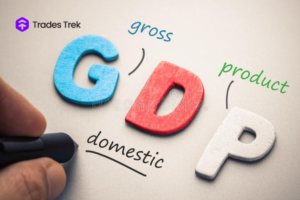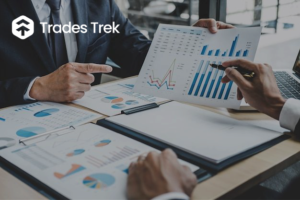Saving money for life’s “big things” requires planning and strategy. It would help if you met certain conditions to achieve those lofty aspirations. These lofty goals include retiring rich, buying the home of your dreams, and providing financially for your children’s education. There are two main ways to invest in the stock market to obtain all the good things in life: passive and active.
To determine which method is best for you, whether you want to build your portfolio or invest in a fund, you must know both investing strategies. Let’s use this straightforward example to help us better understand what it means. There are numerous types of music, including pop, jazz, blues, country, etc. To be successful as a musician, you must decide which musical genre best fits the texture or tone of your voice because every musical genre has its distinctive style and qualities that set it apart from the others. After choosing it, you’ll develop a strategy that will enable you to succeed in the genre.
This article will outline the two types of investing and how to succeed based on your investment objectives. Knowing these investing methods will help maximize your chances of succeeding. First, discuss passive investing and what you should know about it.
What You Need to Know About Passive Investing
One of the most well-liked methods of passive investing involves purchasing shares in an index, a collection of companies. Your money increases if the companies perform well as a whole. Starting an index investment involves little manual work and costs little.
Passive investing does not prioritize stock price fluctuations over the short term. Instead, passive investors purchase positions as soon as they have the necessary funds and keep the asset for an extended period. They have little to no research analysis involvement. Instead, passive investor spreads their money over many different stocks through diversification.
Investors who engage in passive investing adhere to the efficient market hypothesis, which holds that share prices over time reflect the information available in the trade and the security’s fair worth. Everything traded increases the stock’s intrinsic value, and the cumulative buy-and-sell volume pushes it closer to its actual value.
Investors in passive strategies are presumed to be rational, which has two implications. First, people appropriately adjust their views in response to new facts. Individuals then make decisions that conform to norms.
The Advantages of Passive Investing
- There is hardly much need for human intervention.
- Low costs because indexes are not analyzed.
- Performs better when volatility is at a low level.
- Investors always know which stocks or bonds include an index, which results in high transparency.
- Due to the idea of buy-and-hold for the long term, it doesn’t result in significant annual capital gains.
- Compared to active investment, it is more straightforward.
- It maximizes benefits with the least amount of work.
- In a longer race, it outperforms active investments.
- Since it performs as a unit, one underperforming stock has little impact on individual results, reducing the risks.
- Favorable for investors who need more free time for a market investigation.
The Downsides of Passive Investing
- Lack of flexibility prevents one from selling off several shares or taking a defensive stance during market downturns.
- Less investment return than with active investing.
- Because of funding running costs, they are typically structured to yield slightly less than the benchmark return of the index.
- Large sums of money are invested passively due to the buy-and-hold method.
After learning about passive investing, consider whether it’s right. Passive investing is suitable for :
- Investors need more time to monitor the market.
- Investors who are patient enough to build wealth for the long term.
- Risk-averse investors.
- Beginner investors in the stock market.
What You Need to Know About Active Investing
Having a specialist portfolio manager manage your investments is part of active investing. An active manager’s primary goal is to outperform the index. The fund manager will foresee businesses that will increase your wealth. This investing style involves keeping an eye on the prices of an investor’s positions to locate buying and selling opportunities. Classes are frequently based on analysis, and the portfolio aims to perform better than the benchmark. Active investors, in contrast to passive ones, think that the market is imperfectly efficient and that the stock price should differ from its value. By conducting analysis, investors might spot these chances.
In the opinion of active investors, market involvement frequently displays illogical behavior that occasionally eclipses logic. The market fluctuates due to stock prices changing instantly to reflect the news. This fluctuation demonstrates that the stock market exhibits some degree of irrationality.
Because only some managers are proficient in every market and the market favors certain types over time, active managers can occasionally outperform the benchmarks. Investments that are actively managed include mutual funds, portfolios of stocks, and bonds.
The Advantages of Active Investing
- It is adaptable because no specific stocks or bonds must be held.
- The ability to sell specific holdings when the risk is higher.
- It might outperform the returns of the index.
- They are not investing at a specific time and waiting for excellent buying opportunities.
- Active investors outperform the market’s average returns and profit greatly from short price swings.
- Active managers outperform when the market is unstable or the economy is deteriorating.
The Downsides of Active Investing
- Finding an excellent manager to choose from is always daunting.
- High fees because of its complexity and extreme risk.
Active is appropriate for:
- Competent investors with extensive experience.
- Investors with emotional stability who don’t succumb to loss aversion.
- Short-term return-oriented investors.
Let’s examine this example to support the point.
Active investor A and passive investor B want to purchase a particular security. Passive investor B will buy the protection on day one, while active investor A will try to analyze whether it’s the right time to buy stocks. With his analysis, he may conclude that the stock is currently overpriced. He may decide to wait till the stock price falls. If his analysis is correct, he may be able to buy the stocks at a lower price, thereby enjoying a higher return.
To Sum Up
Regardless of how you feel about either method, there are lessons you can take away from both that will make you a better investor.




